Pakistan refugee camp once famous for arrivals is now one-third empty
Shamshatoo camp has witnessed the ebb and flow of Afghan refugees for over two decades. Today, more than 15,000 of its residents have gone home, causing services like schools and health care to downsize accordingly. Those who remain say they have no homes or jobs to go back to, but have clung to their Afghan customs in hope of returning home one day.

An Afghan woman walks through the ruined houses of refugees who have left Shamshatoo camp and returned to Afghanistan. © UNHCR/J.Redden
PESHAWAR, Pakistan, November 11 (UNHCR) - Less than two years ago, Shamshatoo was an obligatory stop for world figures examining refugee problems. American politicians, European cabinet ministers and UN Secretary-General Kofi Annan were all drawn to the camp opened for Afghans fleeing to Pakistan from the civil war in their homeland.
Today it is a monument not to the arrival of refugees, but to departures. About a third of the mud-brick camp sprawling over the bare earth south-east of the city of Peshawar has been abandoned, leaving a maze of eroding walls that make the area look like a vast archaeological site.
When the UN refugee agency began assisting Afghans seeking to go home in March this year, there were more than 53,000 refugees in Shamshatoo. Now, after 15,002 Afghans handed in their ration cards, destroyed their houses and boarded trucks back to Afghanistan, the camp's population is put at just over 37,600.
Large areas lie empty, the valuable timber from the roofs taken back to Afghanistan and the walls crumbling. The occasional refugee from still-occupied areas wanders through the ruins. A young boy watching over goats sings, his voice wafting hauntingly across the hills and gullies.
"The homes all around the school are empty and demolished, so people expect it to close," UNHCR field officer Zill-E-Usman said of one of the four schools, out of 24 in the camp, set to close because of a lack of students. One of the five basic health units has also been closed.

Girls attend the Mohammdi School in Shamshatoo camp, where class sizes have shrunk with the repatriation of about a third of the residents. © UNHCR/J.Redden
The history of Shamshatoo is the history of Afghan refugees. It was first opened in the 1980s when mujahideen fighters battled the Soviet occupation forces in Afghanistan. In the mid-1990s, after the departure of Soviet forces and when hopes were rising for peace in Afghanistan, the then largely Pashtun occupants of the camp flooded back to Afghanistan. By the end of 1995, Shamshatoo was empty and UNHCR declared it officially closed.
The optimism proved premature. Taliban offensives to capture the largely non-Pashtun areas of northern Afghanistan triggered a fresh exodus starting in 1999, and Shamshatoo had to be reopened.
The removal of the Taliban government in late 2001 opened the way for what UNHCR hopes will eventually be the return of all the refugees in Shamshatoo. Whether this will happen depends on events inside Afghanistan.
This partly reflects the economic problems of Afghanistan - refugees still at Shamshatoo say they have no homes, land or jobs awaiting them if they return. It also reflects the continuing ethnic tensions of their homeland - those who returned in 2002 were largely from the ethnic minorities now in power in Kabul, not the Pashtuns who compose the majority of those remaining at Shamshatoo.
"Those who went had the resources," said Bazwan, a black-bearded Pashtun elder in the camp. "They had homes that were still standing, they had contacts inside the present government so they could get jobs, they had friends among the militia commanders so they were safe."
UNHCR is now trying in Shamshatoo, as with the rest of the Afghan refugee population in Pakistan, to see how many are interested in going home in 2003. After the return of more than 1.5 million Afghan refugees from Pakistan in the current year, there are an estimated 1.8 million still in the country, most of them in refugee camps near the border.
The surveys will collect information on the refugees - their ethnic group, where exactly they are from, what skills or wealth they have to sustain them on their return. It will also ask them what they need to know about their areas in Afghanistan in order to make a decision on whether to go home - such as the state of security, schools and medical facilities. No one is expecting a repeat of the surge of 2002.
"Those who went back were the people who were against the Taliban, so the moment they heard the Taliban were overthrown, they started to pack," said Abdul Sattar, a 26-year-old refugee who was appointed headmaster of Mohammdi School in September when his predecessor returned to Afghanistan.
"It all depends on the situation inside Afghanistan," the teacher said of the prospects for the rest of the refugees leaving. "If there are changes in the government and stability, people might go."
Even those who have no intention to return soon are reminded constantly of the number who have left Shamshatoo. Some services have been reduced to reflect the smaller population and the number of non-governmental organisations active in the camp has shrunk from 37 to nine. Residents, complaining that thieves are using the abandoned houses for cover, have mounted round-the-clock security patrols.
The refugees watch carefully as Afghanistan recovers from decades of war, wondering if they should follow those who repatriated. Despite some Afghans having been refugees for more than two decades - some have fled their homeland repeatedly over the years - they have not merged into Pakistani society.
Ramadan began in Pakistan on November 7, a day after the start of the Muslim fasting month in Afghanistan. There was no question that the residents of Shamshatoo and more than 200 other refugee camps in Pakistan would follow the tradition of their country. The refugees are still Afghans.
By Jack Redden
UNHCR Pakistan
Related news and stories
Women-run businesses in Afghanistan dealt a blow by deepening restrictions
UNHCR launches new appeal for Afghan refugees and hosts, urging partners to stay the course
I had to flee for my education, but refused to leave other Afghan girls to their fate
Former refugee, now volunteer teacher, helps other Afghan girls get an education
Families struggle for survival during Afghanistan's coldest winter in a decade
Afghan women affected by Taliban bans on work and study fear for their futures
Your search for « afghanistan » matched 6056 results. Only the first 1,000 results are displayed. Displaying page 1 of 112 pages.
-
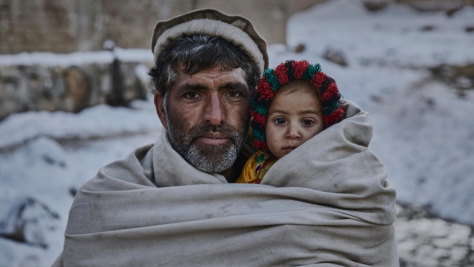
Afghanistan emergency
... Afghanistan emergency (feature on emergency page) “We had no time to gather anything. We fled with ... Half of Afghanistan’s population experiences acute hunger. Conflict has subsided, but violence, ...... -
Afghanistan
... Afghanistan has suffered more than 40 years of conflict, natural disasters, chronic poverty and food ... UNHCR’s work in Afghanistan focuses on protecting the most vulnerable and assisting newly ...... -
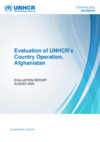
UNHCR Afghanistan Country Evaluation Report 2020
Aug 2020 ... Evaluation of UNHCR’s Country Operation, Afghanistan EVALUATION REPORT AUGUST 2020 CENTRALIZED ... all those who have supported and informed this UNHCR Country Operation Evaluation for Afghanistan. ...... Attachments: ES/2020/04 - Management Response and Executive Summary (.zip) -
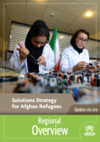
Afghanistan Regional Portfolio: Solutions Strategy for Afghan Refugees 2015/2016
26 Sep 2014 ... Islamabad Kabul Tehrān Jammu and Kashmir AFGHANISTAN UNITED ARAB EMIRATES A R M E N I A ... Afghan Returnees/Durable Solutions 5.8 million* returned to Afghanistan since 2002 Afghan refugee ...... -
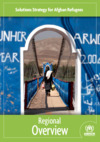
Afghanistan Regional Portfolio: Solutions Strategy for Afghan Refugees 2014
26 Sep 2014 ... Solutions Strategy for Afghan Refugees Islamabad Kabul Tehrān Jammu and Kashmir AFGHANISTAN UNITED ... Afghan Returnees/Durable Solutions 5.8 million* returned to Afghanistan since 2002 Afghan refugee ...... -
Afghanistan 2007
... Author Hosseini in Afghanistan... -
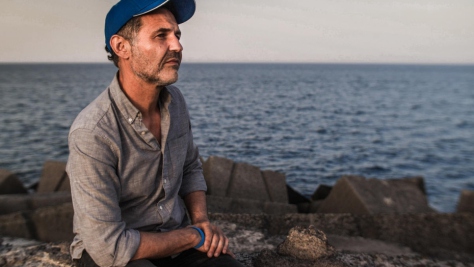
Khaled Hosseini
... Donate now Sign up to our newsletter Afghanistan appeal Khaled Hosseini About Khaled Afghan-born ... a diplomat, when the Soviet Union invaded Afghanistan on Christmas Eve 1979. His family ended up ...... -
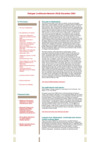
Afghanistan, RLN December 2004
1 Dec 2004 ... Refugee Livelihoods Network (RLN) December 2004 In This Issue: • The case of Afghanistan • Key publications and reports: - Lessons from Afghanistan. Livelihoods and chronic conflict paper - ...... -
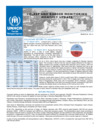
Afghanistan Voluntary Repatriation Report - March 2014
16 Apr 2014 ... March 2014: In March 2014, a total of 1,351 Afghan refugees voluntarily repatriated to Afghanistan. ... of 2,346 Afghan refugees (averaging 26 individuals/day) voluntarily repatriated to Afghanistan. ......
